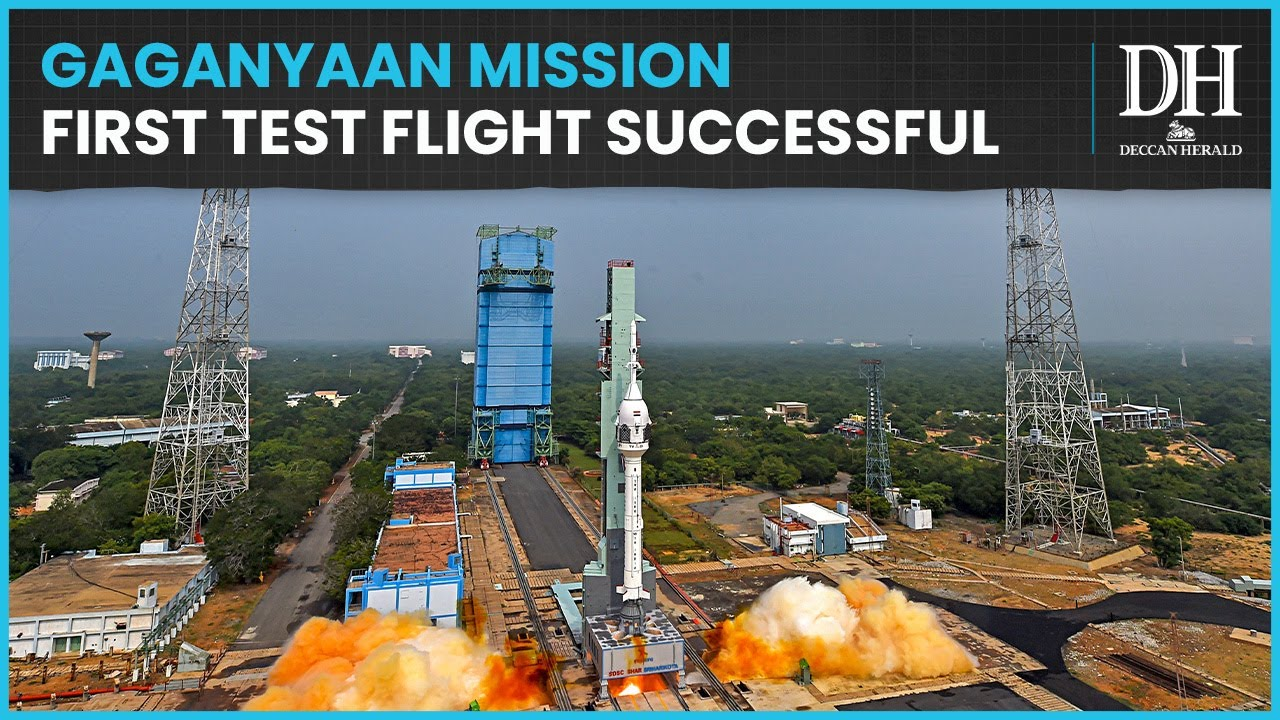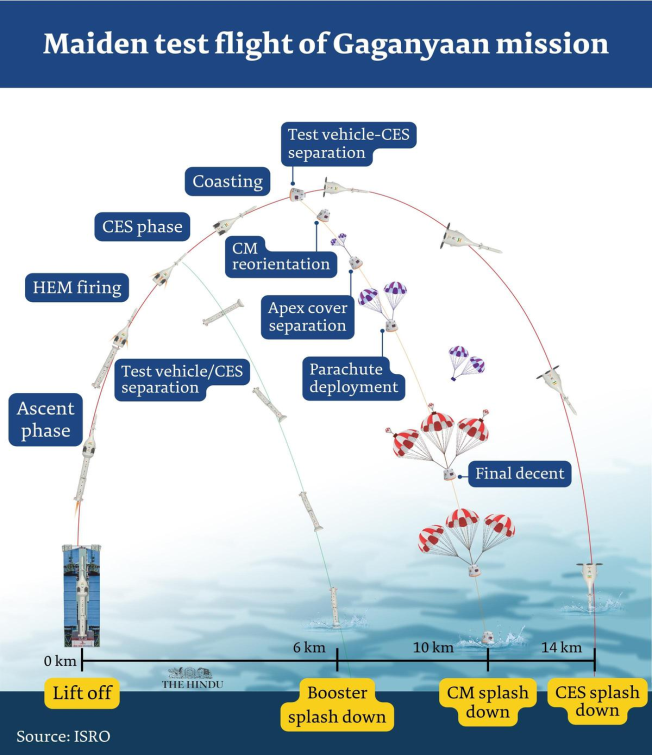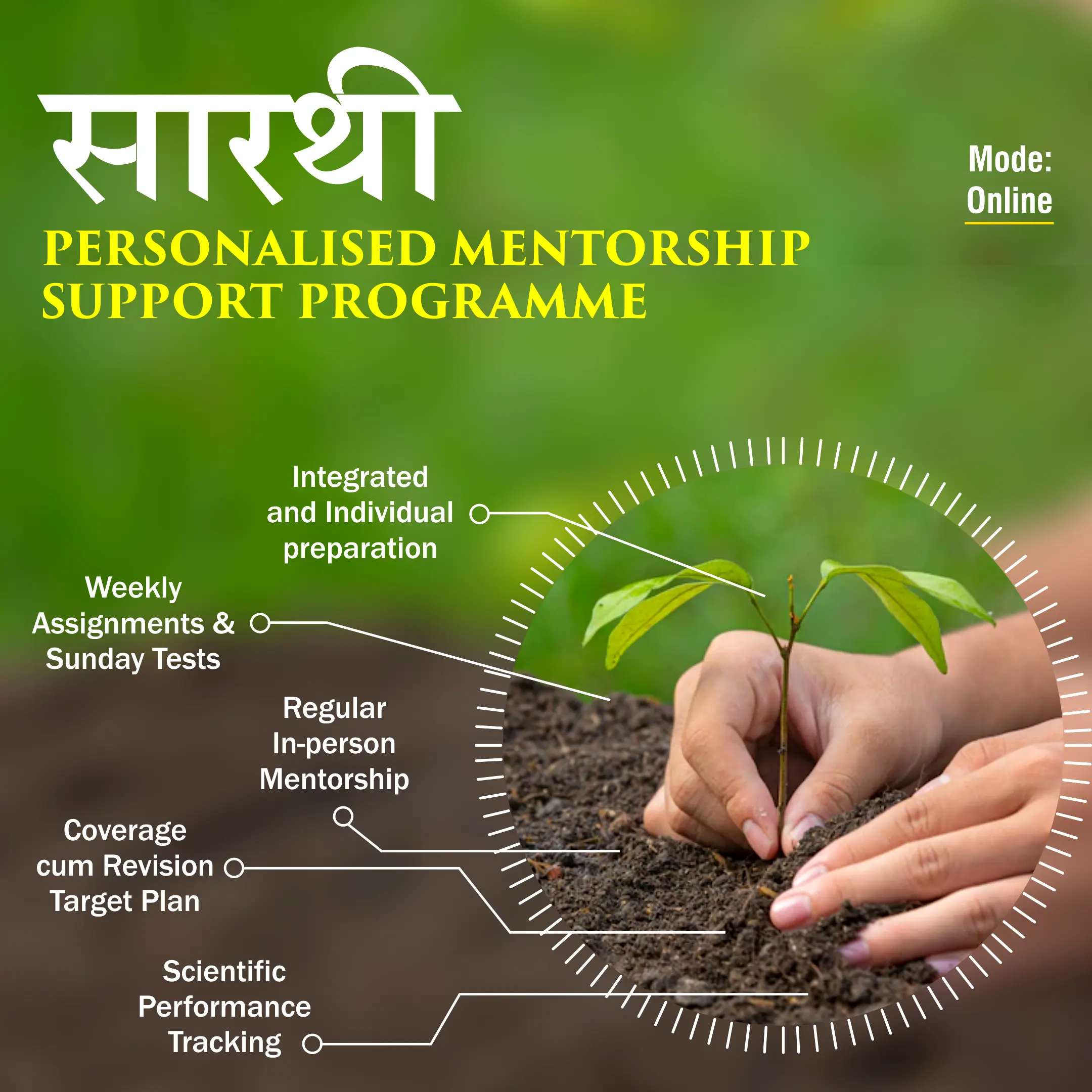Description

Copyright infringement not intended
Picture Courtesy: Deccan Herald
Context: The successful launch of Gaganyaan's TV-D1 marked a significant achievement for ISRO. It was the first test flight of the Gaganyaan crew module's Crew Escape System (CES), which is a critical safety system that would help to protect astronauts in the event of an emergency during launch or ascent.
Details
- The successful launch of the TV-D1 mission is a major milestone in India's Gaganyaan program, which aims to launch India's first human spaceflight by 2025. It demonstrates that ISRO has developed the necessary technologies and capabilities to send humans to space.
- The successful launch of the TV-D1 mission is also a significant achievement for India's space program as a whole. It places India among a select group of countries that can launch crewed spacecraft. It is also a testament to the hard work and dedication of ISRO's scientists and engineers.

Gaganyaan: India's First Human Spaceflight Mission
- India is gearing up for its most ambitious space mission yet: Gaganyaan, which means "sky vehicle" in Sanskrit. Gaganyaan is India's first human spaceflight mission, being developed by the Indian Space Research Organisation (ISRO).
- The mission aims to send a three-member crew to Low Earth Orbit (LEO) for a period of up to seven days. The mission is expected to launch in 2025, after a series of unmanned test flights.
Why is Gaganyaan important?
- Gaganyaan is not only a scientific and technological achievement, but also a matter of national pride and prestige. India will become the fourth country in the world, after Russia, the US and China, to send humans to space on its own.
- It will boost India's space capabilities and applications, such as remote sensing, communication, navigation, meteorology and disaster management.
- It will inspire the young generation of Indians to pursue careers in science, technology, engineering and mathematics (STEM).

What are the objectives of Gaganyaan?
- To demonstrate the capability to launch human beings (three crew members) to low earth orbit and bring them back safely to earth by landing them in either the Bay of Bengal or the Arabian Sea.
- To conduct scientific experiments in a microgravity environment and study the effects of space on human physiology and psychology.
- To test and validate various technologies and systems related to human spaceflight, such as crew module, environmental control and life support system, crew escape system, orbital module, re-entry module, thermal protection system, guidance, navigation and control system, mission control centre, recovery operations etc.
Gaganyaan's mission has been divided into three phases
- Development Phase: This phase involves the design, development and testing of various subsystems and components of the Gaganyaan mission. This phase also includes the selection and training of the crew members.
- Demonstration Phase: This phase involves the launch of two unmanned test flights (Gaganyaan TV-D1 and TV-D2) before the final manned flight.
- The first test flight (Gaganyaan TV-D1) was successfully conducted on October 21, 2023. It demonstrated the performance of the launch vehicle (LVM3), the crew escape system and the re-entry module.
- The second test flight (Gaganyaan TV-D2) is planned for 2024. It will carry a humanoid robot (Vyommitra) along with various scientific payloads to simulate the human presence in orbit.
- The final manned flight (Gaganyaan TV-D3) is planned for 2025. It will carry three crew members to LEO for up to seven days.
- Operational Phase: This phase will commence after the successful completion of the demonstration phase. It will involve regular human spaceflight missions using the Gaganyaan system.
Significance of Gaganyaan mission
- It will boost India's prestige and soft power in the world as a leading space-faring nation.
- It will create new opportunities for innovation and entrepreneurship in the space sector.
- It will generate employment and economic growth in various industries related to aerospace, electronics, materials, medicine and education.
- It will contribute to social development and environmental protection by providing better access to information and services through satellites.
- It will advance scientific knowledge and understanding of various phenomena in space and on Earth.
Challenges and Risks of the Gaganyaan Mission
- It requires high levels of technical expertise and operational excellence to ensure the safety and reliability of the spacecraft and its systems.
- It involves complex coordination and integration of various subsystems such as the launch vehicle, orbital module, crew module, service module, life support system, thermal protection system, guidance system, propulsion system, communication system and recovery system.
- It demands rigorous training and preparation of the crew members for coping with physical and psychological stress during launch, orbit, re-entry and landing phases.
- It exposes the crew members to various hazards such as radiation, microgravity-induced health issues, orbital debris collision, fire outbreaks and equipment malfunction.
- It entails high costs and resource allocation for developing and maintaining the infrastructure and facilities for human spaceflight.

Conclusion
- Gaganyaan is a historic and visionary mission that will mark a new milestone in India's space journey. It will showcase India's scientific prowess and technological innovation to the world. It will also inspire and empower millions of Indians to dream big and achieve their potential. Gaganyaan is not just a mission, but a manifestation of India's spirit of exploration and discovery.
Must Read Articles:
GAGANYAAN MISSION: https://www.iasgyan.in/daily-current-affairs/gaganyaan-mission-45
|
PRACTICE QUESTION
Q. What are the key milestones achieved by India in its space development efforts, and how have these achievements contributed to the country's scientific and technological advancements as well as its global standing in the field of space exploration?
|

















